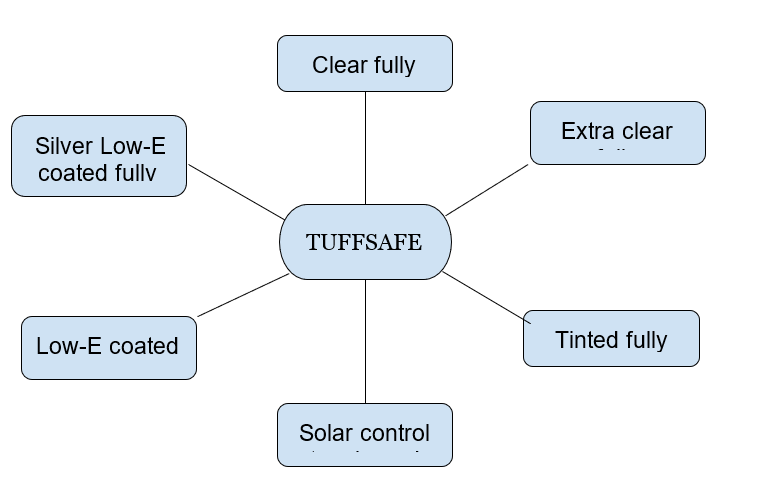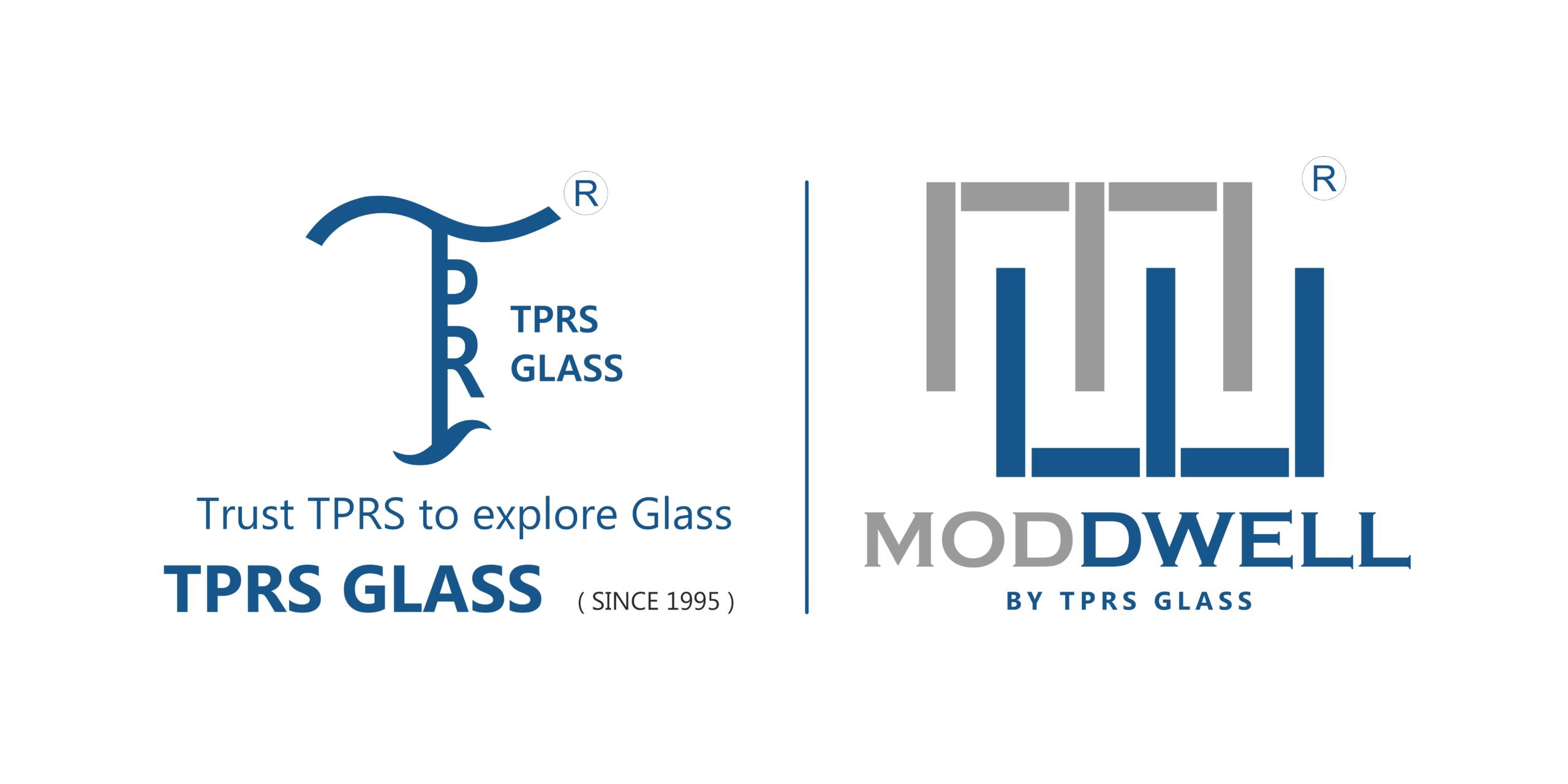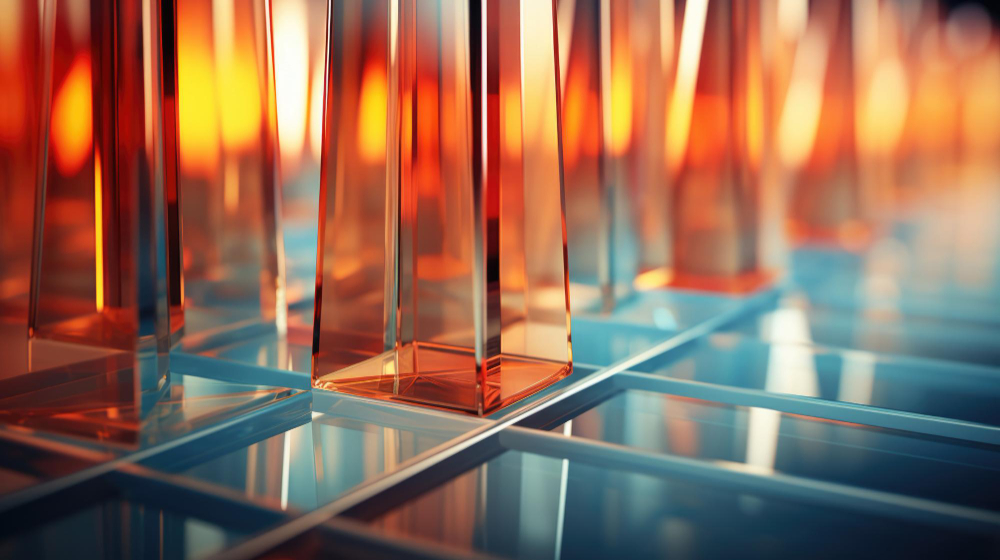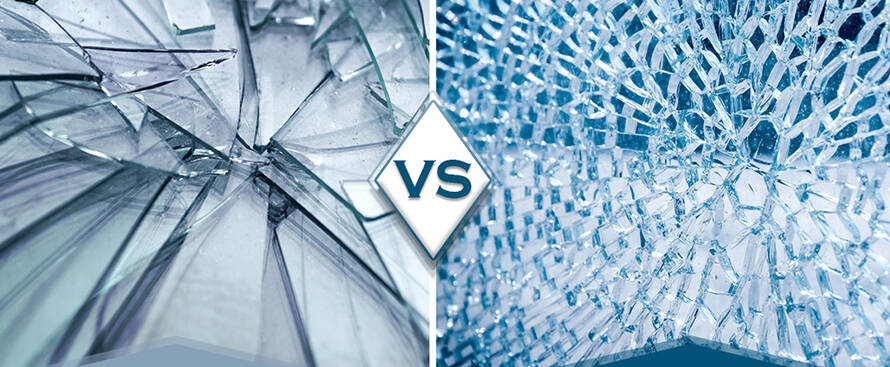Glass : A Versatile Material Shaping Modern Life
Glass is a complex, highly utilitarian material that has encyclopedic relevance in today’s world as well as the ancient one. Most commonly made up of sand, soda and lime, Glass is formed through the stages of melting the raw materials down at a high temperature followed by the solidification of the liquid mass into a solid transparent material. This paper aims at identifying the importance of glass due to its properties such as the optical clarity, hardness, and chemical inertness it possesses in diverse applications.
Everything from the utility product such as windows, bottles, infants’ eyeglasses, to products with more specific functions in technology, architecture and scientific research- these are all made from glass owing to its qualities of transmitting, refracting and reflecting light. Its versatility has also continued to be seen in new types of glass including the toughened and laminated for better safety and durability as well as the smart glass which changes its properties depending on conditions of the environment it is in.
As we advance in the discovery of what glass is, we will be introduced to forms of glass, growth in technologies to enhance uses of glass and importance of glass in the society today. This is the reason why glass remains a versatile material of choice depending on the way it will be used be it in household items or in complicated industrial parts.
A Brief History Of Evolution Of Glass Through Ages

The use of glass dates back to ancient Mesopotamia, 3500 BC and this marked the history of the evolution of glass. In the beginning, glassmaking was a crude industry, where elaborate mass-producing was not available and they made beads and ornaments by hand and then baked them in a furnace. However, the techniques over time evolved, and glass making spread to other parts of the word including Egypt, Greece and Rome where, blown-glass technique developed as a novelty during the later part of first century B. C. This technique made rolling and the production of glass vessels easier and therefore made glass more affordable to a larger populace and no longer was believed to be a material that only the affluent could afford.
During the Middle Ages, Islamic people fine tuned the art of glass making even more and added new forms of art to the vessels, also making the products better. The renaissance period also re-invigorated the interest of the people in the art of making glass and the designs were exceptionally intricate and the techniques used were stained glass windows were developed. Some of the most important changes that began during this period are characterized by the technological advancement in the ways of producing industrial glass, and specifically the flat glass that would be required for architectural design.
More progress was made in the 20th century, for instance the provision of safety glass, tempered glass and the use of glass in technology/Science. Glass today is still changing, and more research is carried out in the substances, the techniques of production, and the uses of glass that define it as a fundamental material in the contemporary world.
Significance Of Glass In Modern Life

Glass is used in so many sectors of society and those functions make it an indispensable component of our day to day lives. First of all, glass is an essential material for architecture since it is transparent and clear: it can let lighting into some buildings or protect something from outside conditions. Still, as a material it can be also used in windows, doors and facades, thus: increasing energy performance and beauty. Glass is used in transportation where it provides safety characteristics especially as automotive windshields, aircraft windows, and the panels of trains for the safety of passengers and drivers.
However, glass is an essential component In today’s technology involving items such as touch screens on mobile devices, computer monitors on laptops, and Internet optical fibers among others. Inertness of this material makes it fit for use in preparation of laboratory materials such as test tubes, beakers, pipettes among other laboratory appliances that are very crucial in research and experiments. In medical applications, it is evident that glass is used in product manufacturing of syringes, vials, and surgical tools because of its non-interference quality with the devices.
Besides, the glass packaging is considered appropriate for foods and drinks because it is non-porous thus helps in maintaining the integrity of the food by preserving its taste and free from spoiled portions. Moreover, glass is recyclable hence when used in the construction, containers, and other user products, it helps in the provision of environmentally friendly products through recycling.
Culturally, glass remains the epitome of creativity, being used in areas such as sculpture, stained glass windows, and processed ornaments. Strengths that include the capacity to transmit and refract light makes structural and interior designs and features appear more elegant and realistic.
In conclusion, glass is a crucial material as it is one-of-a-kind – it is multifunctional, and its applications are evident throughout various industries and impacts people’s lives by enhancing technology, structure, and healthcare, and reflecting beauty while being eco-friendly and pioneering. Lighting up our lives and shaping it, glass has become the epitome of creativity and application.
Toughened Glass

Toughened glass also referred to as tempered glass is basically a safety glass that has gone through the process of thermal, or chemical tempering to enable it to have a higher strength than any other annealed glass. The process entails heating the glass to nearly its transition point usually at about 620C or 1148F and cooling the surface through use of pressure air jets or chemical treatments.
Through quenching the rapid cooling of the glass brings about a state of equilibrium of stress inside the glass and since the outer shell shrinks with coolness while the inner core expands with heat, outward pressure is thus compressed and the core is stretched. This process increases the glass’s ability to withstand mechanical forces such as impact and bending pressure several fold compared to its non-treated or basic form of the thickness.
Toughened glass is also known as tempered glass which is one of the types of safety glasses that is heat treated uniformly to a required temperature of around 650 C .
Toughened glass is commonly called safety glass owing to the fact that it is made to meet specific codes pertaining to Safety Glass. Toughened glass cannot be cut, drilled, ground, or polished after toughening and any procedure such as sanding or etching will reduce the rating of the glass and may lead to early failure.
Toughened glass is one that cannot easily be broken and in case it is broken it disintegrates into many small particles making the risk of injury of the people far much reduced because there are no sharp edges or pointed corners as with normal glass. On the other hand, the toughened Glass is also breakable and all that is required is striking a small tap at the edge of the glass by using a hammer or any hard object.
Evolution Of Tempered Glass ; An Overview

The history of the temper glass as it is also referred to can be dated back to mid seventeenth century when Rhine prince Robert tried out a little experiment that saw him find a way of producing extra hard glass by quenching a molten glass in water. Another method that was used in the earlier days which paved the way for the creation of toughened glass called the “Prince Rupert’s Drops,” showed how surface compression and internal tension worked, and thus led to the creation of tempered glass.
Tempering process was discovered in the later half of the nineteenth century and patents were granted to the French and German inventors for the process of tempering. Another advancement in tempering that followed saw large-area flat tempered glass for applications in automobile windshields being manufactured in the early 1930s by companies in France, United States and the United Kingdom signaling the start of the use of toughened glass.
In the 1970s major developments took place in the science of toughened glass with the innovative glass reinforced liquid media that enabled thin glass to be tempered with the help of sheets. This brought a dramatic shift in the making of the toughened glass that is widespread used in different industries across the world.
In China, the history of toughened glass started in the 1950s, where glass factories started coming up, and manufacturing of military grade toughened glass. Afterwards, the technology of producing toughened glass is being popularized and applied in China especially in the automotive industry, construction, aviation and electronics.
The modern glass with enhanced properties is still widely used in the contemporary architecture and constructions as a material with high mechanical characteristics and optimal safety indicators. Next, let me briefly mention that the history of creating toughened glass is honored by memorial museums like the Qinhuangdao Glass Museum exemplifying the historical development of China’s glass industry and its contribution to the progress of the world wide technology.
The Science Behind Toughening

The process of making a glass stronger, also referred to as tempering, is one of the most satisfying innovations in the field of engineering that turns ordinary glass into a piece of work that is so strong and hard.
That is how the method of creating toughened glass or in other words, tempered glass is a true wonder of engineering that makes normal glass turn into bulletproof glass. Specifically, through processes of annealing, tempering, and mechanically altering the glass through processes of heating and cooling, the surface is changed dramatically to raise both the material’s thermal and impact strengths as well as maintain its transparency and beauty.
Other procedures necessary in the toughening process are further explained in this passage, explaining how to regulate heat lamps, then slowly cooling the glass, and the strict quality assurance measures spoken brings out the new safety and reliability glass. From annealed glass to toughened glass this is a process that seeks to portray the entirety of innovation in using the most common aspect in the market which is glass. This part is devoted to the procedure of making glasses tough and you can witness how it is done.
Stages Of Glass Tempering

Tempering is a well-regulated and precise heat or chemical procedure that increases the stiffness of the glass which is equally known as toughening of the glass. Here’s a detailed explanation of the toughening process:Here’s a detailed explanation of the toughening process:
- Preparation of Glass: The process starts with choosing quality annealed glass that is the common type of glass made by gradually cooling molten glass to get to the room temperature. The glass is then shaped and sized in the manner in which the final product is intended to be made.
- Heating Stage: The glass panels or sheets are then carefully put into a tempering furnace that has been heated to temperatures of around 570 to 620 degrees centigrade (1058 to 1148 degrees Fahrenheit) depending on the kind of glass and the thickness. The melting stage is where the glass heats up and thus it becomes easily moldable and easily influenced.
- Quenching Stage: When the glass has finally gained the correct heat temperature, it is then quickly exposed to a process called quenching in which the glass is sprayed with cool air or chemicals. This fast cooling makes the exterior part of the glass pull inward more expeditiously than the interior core zone that is comparatively still hot. What happens is that the outer skin of the glass air cools and solidifies than the inside, thus subjecting the outer skin to high state of stress while the core subject to tensile stress.
- Balancing Stresses: The principal key with regards to the cooling process is to control the cooling process itself so that internal stresses in the glass are well balanced. The stress on the surface causes compression while stress in volume results in tension, thereby generating a balance that enhances the glass’s overall strength to mechanical force.
- Final Inspection: In the following stage, the glass gets toughened and a thorough inspection is carried out on the same to qualify the quality level needed. This includes a confirmation of the quality and condition of the surface of the glass for instance the presence of any blemishes that may be fatal to the glass, or any stress that may be present in the glass.
- Optional Additional Processes: Depending on the intended application as well as the necessary characteristics of the thin and toughened glass, other procedures like edge polishing or drilling might be carried out to meet the intended application and appearance.
- Packaging and Distribution: When the toughened glass has been through all the sorting and any imperfections have been weeded out, the next step is to package it properly for distribution to fit different industries and uses in cars and construction, household and electronics, recreation and architectural uses.
To sum up, the process of toughening is based on heating of annealed glass and its subsequent cooling in a very short amount of time, providing the creation of a high amount of compressive stresses on the surface of the glass, and high tensile stress within the core; higher strength, durability and safety characteristics as compared to standard glass being the result.
Properties That Make Toughened Glass Popular

Enhanced Strength: Toughened glass is usually harder or in other words has more resistance than normal glass of equal thickness. Due to this, the material can support more mechanical loads; thus, it is not easily deformed by impacts and bending loads. This property aids in the prevention of breakages and also includes a safeguard for many applications.
Safety: This is also important because it is known that the so-called ‘toughened’ has also certain safety characteristics. Thus, a colony of crucial toughened glass breaks into as many, mainly inconsequential fragments in contrast to standard glass, which shatters into abrasive mastodonic portions. This makes the toughened glass ideal to be used in areas where safety is a priority for example in case of breakage the pieces will be sharp but harmless compared to normal glass.
Thermal Resistance: Toughened glass is also very stable in terms of heat; it cannot break even when exposed to very high or very low temperatures. This property makes it suitable for use in areas such as car windows and ovens because they are areas of high and low temperatures respectively.
Durability: It is stronger and safer of a glass than regular glass and for this reason is harder and lasts longer than regular glass. It is comparatively immune to all kinds of deterioration and due to its inherent characteristics, it finds generic application in architectural application, glazing, household appliances etc.
Versatility: Toughened glass is one of the most important products which is very effective for use with various organizations in various capacities. It can be widely used in automotive fields, constructions, interior design and consumer electronics, etc. This flexibility stems from the fact that it fulfills several rigorous requirements thus providing diverse characteristics like force and security.
Optical Clarity: Toughened glass is strengthened and thinner as compared to standard glass but it has the same optical characteristics as that of standard glass. It permits the passage of light Clear and unobstructed and is used where vision is important like in windows and display devices.
Easy Maintenance: Toughened glass is relatively easy to clean and maintain, and to keep it looking its best, several simple care procedures must be followed. It does not harbor the formation of stains and dirt which is important in areas such as kitchens and bathrooms.
In certain areas of application, the features of toughened glass provide enhanced solutions to difficult problems and so remains the glass of choice due to safety, durability and flexibility. This makes it an essential material in contemporary engineering and architectural solutions.
Distinction Between Toughened Glass And Ordinary Glass
| Criteria | Toughened glass | Ordinary glass |
|---|---|---|
| Also known as | Tempered glass | Annealed glass |
| Production | By heating ordinary glass for about 600-650 degree C and immediately cooling it down with the help of air jets. Process is known as quenching | Made by cooling molten glass slowly in a controlled environment results in a smooth and completely soft glass. |
| Cooling process | Quenching creates a compressive stress above the glass surface and interior tension results in the strength of the glass. | The slow pace of cooling makes glass molecules occupy themselves in a no-stress state. |
| Strength | Five times robust than ordinary glass and it can overcome great impact and thermal tension easily | Weak and brittle as it easily breaks under impacts and thermal stress |
| Safety | Breakage causes the glass into small and pebble-like pieces that are less harmful and more safer. | Breakage will make large, sharper pieces that results into serious injury and harm |
| Thermal resistance | High thermal resistance | Relatively low thermal resistance |
| Flexibility | Cannot be molded after toughening. | Can be altered as per the need . |
| Applications | Used in car windows, shower doors, glass doors, facades and electronic devices where safety is more critical | Used in windows , picture frames and basic interior works where safety and strength are not so concerned |
Glass that is toughened is an extremely important substance in this day and age because of how strong, protected and adaptable it is. This makes it perfect for everything from cars, houses, computers, and other electronics due to its great resistance to heat and mechanical pressure as well as its great strength. If it is broken it shatters into smaller pieces which are not sharp thereby reducing the chances of getting injured hence it is used on places where people walk barefoot like bathroom floors .
The demand for strong and dependable materials is indeed at its peak in an environment of mushrooming towns and improved technology. In this regard, toughened glass – an essential constituent of safer building structures; faults mean swift paralysis – has never been more important than today (for example in vehicles) as well as in other appliances. Consequently, its significance in modern construction activities remains undoubted while it also serves as an indicator that whatever technological advancements have taken place do not necessarily imply a corresponding increase in levels of safety across all sectors. When it comes to future progressions then toughened glass will play an even bigger role thus strengthening and reinforcing its status as a critical component of modern infrastructure and design.
So Let's Conclude By Introducing The Best Toughened Glass Provider In The Current Competitive Economy
TPRS TOUGHENED GLASS
TPRS has been a leading manufacturer producing a range of quality glass applications. We have been in business for 25+ years now, offering better solutions for car, architectonic, indoor glass among other uses. Our production of glasses is guided by environmental concern while being sustainable and continually successful. Also, innovatively we are the first company in India to introduce Digital technology in Ceramic Printings and Switchable Glasses .
TUFFSAFE is stronger than annealed glass of the same thickness by a factor of four to five, and its manufacture involves full tempering procedure . The additional mechanical and thermal stress resistance capabilities enable use of TUFFSAFE in a variety of application spaces such as facades, interior partitions, frameless glazing, shower cubicles and furniture . All these locations have impressively strict requirements for safety and appearance.
This product is called Tuffsafe by TPRS Glass which produces it on one of their four electric horizontal roller-hearth tempering lines. Either lines have a high-powered top-and-bottom convection heating system which allows processing of the market’s most advanced coatings with heat. These two machines are enhanced with a highest precision cooling system (quenching) to guarantee minimal iridescence as well as excellent glass flatness

TPRS Company toughened glass is the best choice among all other glass whether in application or manufacturing. This is because TPRS Company has the most advanced manufacturing methods and highest quality control in the industry. This ensures every sheet of glass they produce meets the toughest strength and safety tests. TPRS toughened glass has extremely high durability and is resistant to both heavy impacts and extreme temperature changes while retaining its strength. Additionally, TPRS toughened glass can offer innovative solutions such as higher UV protection to block harmful UV rays from passing through, this protects both you and your interior flooring and fabrics from fading. Their glass can also undergo anti-glare and anti-smudge treatments to keep it clean and free from smudges without the need for constant cleaning. TPRS toughened glass is also environmentally friendly as their production methods are much less harmful to the environment compared to other toughened glass manufacturers. TPRS toughened glass can be made to be stylish and decorative with a wide range of options and capabilities to be customized to any size or shape. This glass type offers the highest level of safety, performance and stylish elegance for various applications such as architectural glass projects or to technology products like mobile phones and tablets. For top quality and performance, choose TPRS Company toughened glass. It is the best there is.
Discover the unparalleled strength and safety of TuffSafe Glass by TPRS
Opt For Tprs Toughened Glass To Experience Unbeatable Durability, Crystal - Clear Transparency , And Outstanding Cutting Edge Features That Will Simultaneously Elevate Both Safety And Style In Every Setting





